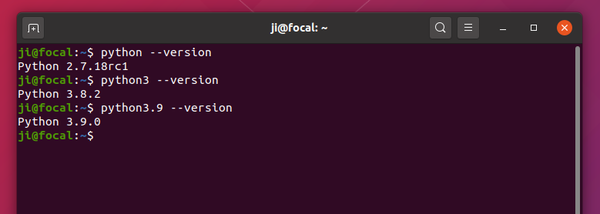

stderr is used to handle errors, if any, that occurred from the standard error streamĤ. Its syntax is subprocess.check_output(args, *, stdin=None, stderr=None, shell=False, universal_newlines=False)ģ. If it is zero, it returns the output as a byte string.

It runs the command(s) with the given arguments, waits for it to complete, and takes the return value of the code.

This function is similar to the check_call() function. –> 364 raise CalledProcessError(retcode, cmd)ģ66CalledProcessError: Command ‘False’ returned non-zero exit status 1. > 3 subprocess.check_call(‘False’,shell=True)~\anaconda3\lib\subprocess.py in check_call(*popenargs, **kwargs) n(,shell=True) #using the run() methodĬalledProcessError Traceback (most recent call last) These variables will be used instead of the default ones from the current process’ environment.Įxample of run() function: import subprocess env should either be None or a mapping that defines the environment variables for the new process. By default, they will be opened in the io.TextIOWrapper format.ĩ. If encoding or errors are specified, or text is true, then the file objects for stdin, stdout, and stderr will be opened in text mode using the given encoding and errors.
#PIPSIGSET PYTHON 3 INSTALL CODE#
If this argument is true and a non-zero exit code exists, then a CalledProcessError exception will be raised.Ĩ. check argument checks if the process exits with a non-zero exit code. timeout decides when the child process should be killed and waited for.ħ. When capture_output is true, stdout and stderr will be capturedĦ. args take the commands that are to be executedĥ. Its syntax is n(args, *, stdin=None, input=None, stdout=None, stderr=None, capture_output=False, shell=False, cwd=None, timeout=None, check=False, encoding=None, errors=None, text=None, env=None)ġ. Then runs the instance of the CompletedProcess class, which represents that the process has finished. It runs the input commands and waits till all the commands are completed. This function is similar to the call() function. We got the output as 1 here which indicates that it executed successfully. By default, it runs the command directly. We set the shell argument as true because we want the subprocess to consider these commands as a single command and run. The -l command lists the directories in an extended format.

In this example, the ls command is the list of all the files in a directory. Subprocess.call(, shell=True) #using the call() function It might also give a CalledProcessError exception.Įxample of call() function: import subprocess If there is no output, it returns the code that is executed successfully. This function returns the output of the execution. If it is true then the program executes in a new shell. stderr is used to handle errors, if any, that occurred from the standard error streamĥ. stdout is the value of the standard output streamĤ. stdin refers to the value of the standard input stream passed as (os.pipe())ģ. We can pass multiple commands separated by a semicolon ( )Ģ. arg is the command that needs to be executed. Its syntax is subprocess.call(args, *, stdin=None, stdout=None, stderr=None, shell=False, timeout=None)ġ. This function can be used to run an external command without disturbing it, wait till the execution is completed, and then return the output. We will discuss each of these commands in the next few sections. We have different commands and these include: This module can be used as an alternative to the following functions or modules in Python:Īs said before, we can obtain inputs, outputs, etc. The methods in this module can be used to perform multiple tasks with the other programs. So, we can import this module directly by writing the below code.
#PIPSIGSET PYTHON 3 INSTALL INSTALL#
We get this module by default when we install it. We can do the above tasks in Python using the subprocess module in Python. Also, this module provides various commands to obtain the input/output/error pipes. We can also run those programs that we can run on the command line. We can use subprocess when running a code from Github or running a file storing code in any other programming language like C, C++, etc. Subprocess is the task of executing or running other programs in Python by creating a new process. So let us start with an introduction to the subprocess in Python. Do you know that you can execute the external processes in Python? We will learn about this feature of Python using the module names ‘subprocess’.


 0 kommentar(er)
0 kommentar(er)
